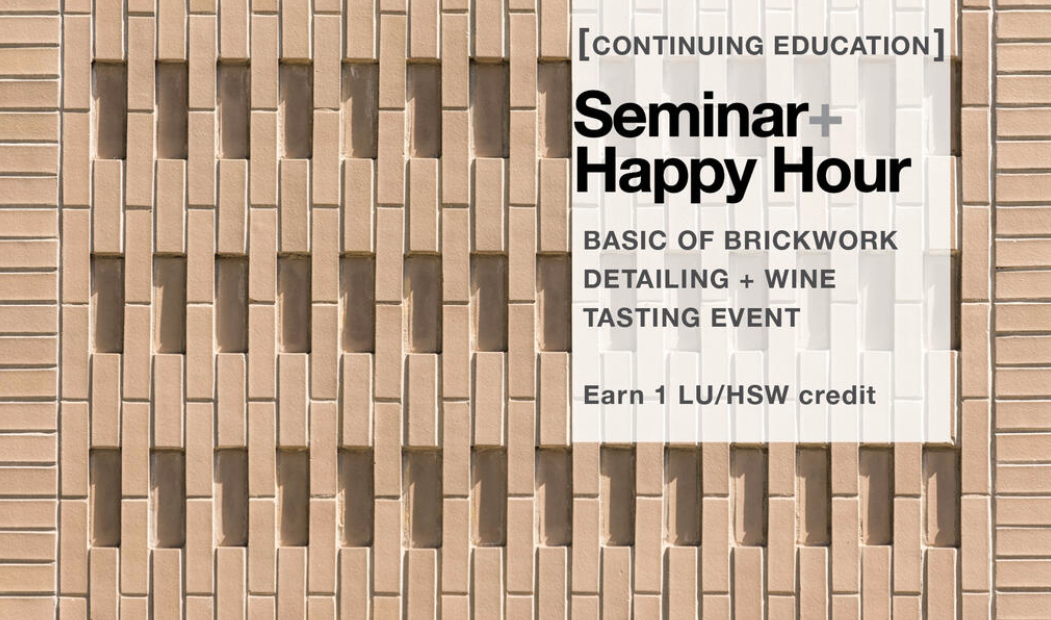AIA credited (1 LU/HSW credit) 4:00-5:00pm AIA Seminar 5:00-6:30pm Wine Tasting Happy Hour
Appetizers and beverages will be provided.
Our events are open to architectural, design, and building industry professionals only.
Register Here
Basics of Brickwork Detailing
Water penetration is responsible for many of the problems encountered in masonry walls today. The successful performance of a masonry wall depends on limiting the amount of water penetration and controlling any water that does enter the wall system. Water penetration resistance and control in brick veneer is the focus of this presentation. The concept behind the ‘brick veneer drainage wall’ is discussed in detail, as well as, the proper materials to specify in order to maximize a wall’s water penetration resistance. The various elements and materials which make up a building are in a constant state of motion. All building materials expand and contract due to changes in temperature; some materials move with changes in moisture content. Each building material also changes dimensions due to stress and some materials tend to flow when subjected to sustained loads. These major causes of movement: thermal, moisture, deflection and creep, along with the proper way to control these movements are the focus of this presentation.
Other topics included in this presentation are —
- Workmanship: What to expect from the mason.
- Airspaces: Why is the airspace so important and what are the minimum requirements for proper performance.
- Colorless Coatings: When should they be used? Are they always effective?
- Flashing and Weepholes: Which types are most effective?
- Expansion Joints, Control Joints, Building Expansion Joints: Is there really a difference, or is it just semantics.
- Joint Spacing: Is there an appropriate ‘Rule of Thumb’ – or can such a rule lead to cracking?
- Compressible Fill: Where should it be used and why.
- Shelf Angle Details: What must occur at shelf angles to allow for the expected movements?
Questions/Comments?
Email: events@glengery.com
